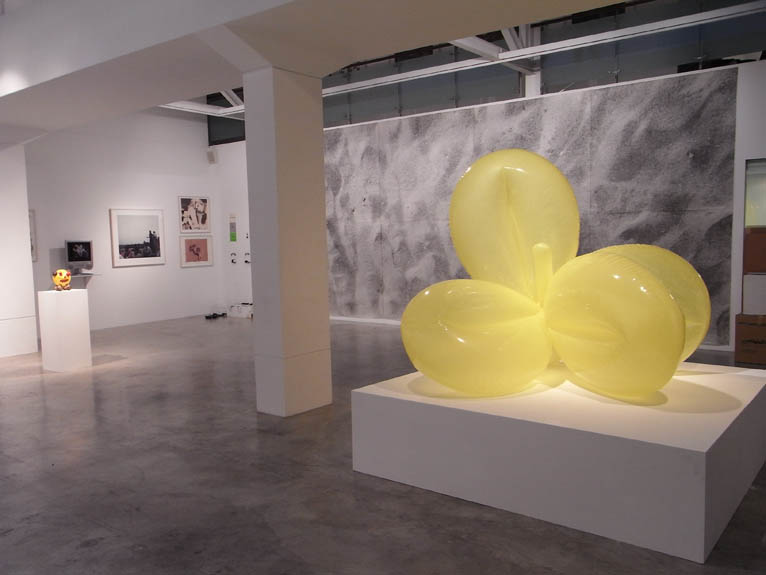200 ARTWORKS 25 YEARS
| August 1, 2010 | Post In LEAP 4

There are a few reasons why “200 Artworks 25 Years: Artists’ Editions for Parkett” feels like an apt fit at the Singapore Tyler Print Institute but none more compelling than the proposition that an organization which is at its core an art magazine might be naturally allied with another organization which is at its core a printmaking studio, through the concepts of print and the multiple. “200 Artworks 25 Years” was unlike any other print show that STPI has mounted in the past, focused not on printmaking per se, but commissioned artworks bounded to the creative vision and mission of the celebrated Swiss contemporary art magazine Parkett, a publication that has aimed, from its first issue in 1984, “to produce a vehicle of direct confrontation with art, providing not only coverage about artists, but original contributions by them.” Even with two hundred pieces packed onto a single level and into a relatively small exhibition space, the Parkett exhibition—which also serves as a sort of twenty-fifth birthday party for the magazine—remains appealingly bijou and cheerful. As artist’s editions, each of the works is appropriately, or rather economically, sized to accompany the magazine, such that one goes through the exhibition not unlike a customer going through a carefully curated museum store or vintage showcase.
For a local context in which exposure to international contemporary art struggles to keep pace with a discourse of internationalization, this was to be an excellent occasion to display some of the biggest names in the field, with pieces by Damien Hirst, Tracey Emin, Louise Bourgeois and Asian giants like Anish Kapoor and Ai Weiwei. If these artists are staples in modern and contemporary art museums in the West, they remain by comparison rare features in Singapore galleries. In this regard, the Parkett exhibition, which originated at the 21st Century Museum of Contemporary Art in Kanazawa, Japan, filled a lacuna in the island-state’s calendar. Perhaps understandably given this context, the exhibition was imbued with a pedagogic drive, seeking to educate Singaporean eyes on present-day art practice often viewed as inaccessible and impenetrable. At times, this drive seemed exaggerated, particularly in a didactic pamphlet entitled “Thoughts” which sought to direct interpretation with questions that bordered on patronizing. The editions, for their part, relate easily to a lay audience, such as Doug Aitken’s mirrored kite, Daniel Buren’s striped tablecloth, and Dominique Gonzalez-Foerster’s calendar for twelve months in twelve years. They ran the gamut, from photographs, to drawings, videos, sculptures, and sound art.
The exhibition was designed to evoke a living or domestic space, progressing through areas labeled Studio, Playroom, Wardrobe, City, and Garden in a consciously avant-garde elision of the gap between art and life. Yet it is however neither immediately apparent nor persuasive to the viewer how these room themes are connected to the Parkett editions exhibited in the individual sections. Whilst the light and airy design of STPI’s space supports the often irreverent humor and whimsy present in many of the works, the incongruity of Jeff Koons’s sardonic Inflatable Balloon Flower (Yellow) against Felix Gonzalez-Torres’s screen-printed billboard in the “Playroom” space jars the informed viewer as far too literal. Gonzalez-Torres’s work features a plot of sand covered with footprints, a monumental work of pathos and melancholy, consistent with his political but poetic body of work that frequently deals with AIDS, racism, and homophobia.
The exhibition does well at capitalizing on the increasing popularity of collectible book art, but as a retrospective of the Parkett story, it could be further elaborated to include more historical information on the engagements and negotiated processes involved in these collaborations between artists, writers and publishers. Much of this, I figure, is left to the viewer to discern through his or her own reading, literal and figurative, of Parkett magazines and artworks. Adele Tan

